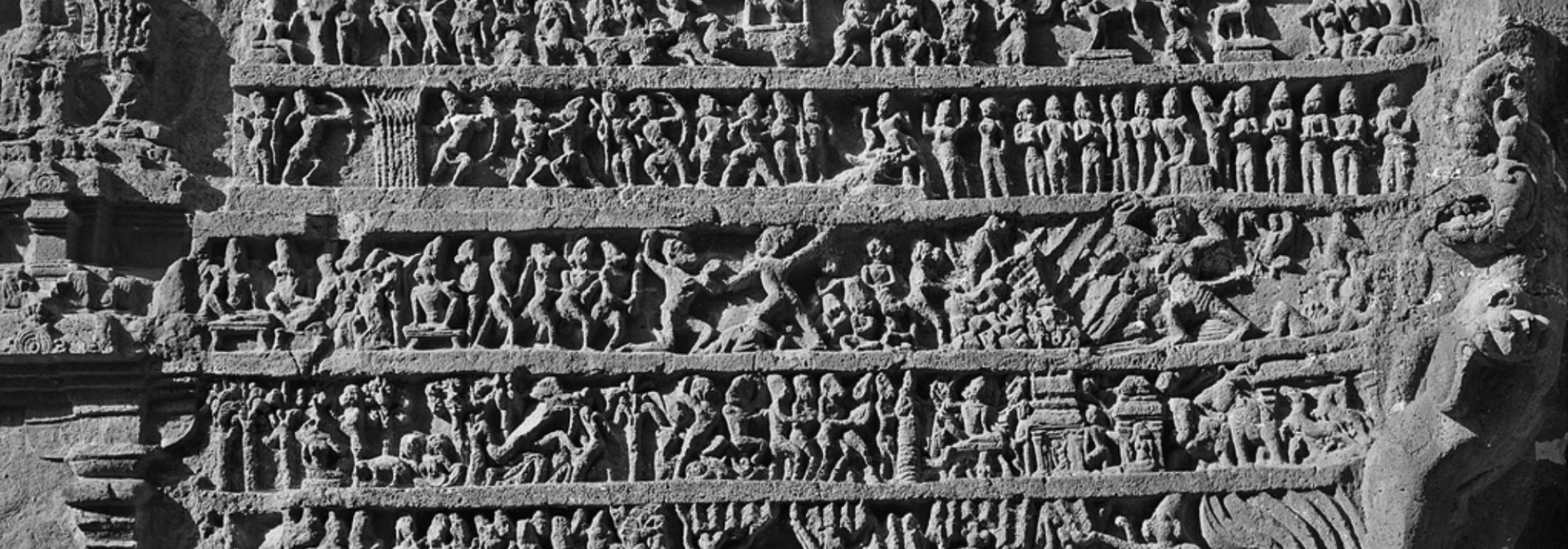When describing Rama, Valmiki says, “कुलोचितमिति क्षात्रं धर्मं स्वं बहुमन्यते” in the beginning of the Ayodhya Kanda (1.16). Rama opined that kshaatra was the most appropriate path for his clan and took great pride in his valor. Rama knew elephant-riding, horse-riding, and was well-versed in all martial arts and techniques. If he went for war, he always returned victorious. Valmiki describes this in about 24 verses. In the beginning of the Aranya Kanda, the seers who lived among humans (जनस्थान) came to Rama and said, “We can no longer tolerate the trouble that the rakshasas are giving us. You must protect us.” In reply, Rama merely said, “So be it.” To that Sita said, “The rakshasas have done us no harm. Further we have come as forest-dwellers (on the path of vanaprastha). During vanaprastha, it is said that पाशुकयाग (yajna in which an animal is killed and offered to the Supreme) should be carried out in the form of धान्ययाग (where grains are offered) or आज्ययाग (where clarified butter is offered). The final portion of the Brhadaranyaka Upanishad has a reference to this. The shastras ordain such level of non-injury and non-violence during vanaprastha. To kill these evil rakshasas, we have to adopt viler means. Is this appropriate?”
In response Rama says,
“This is आगन्तुक-धर्म (external/peripheral duty). This is not something that we wished for. We did not take the path of vanaprastha because it is said so in the shastras. We have come here as visitors, merely to fulfill the promise made by my father. Fundamentally, we our profession is that of kshaatra. We can move from one ashrama to another several times but our varna doesn’t change. The destruction of evil is a kshatriya’s dharma."
When Sita says, “स्नेहाच्च बहुमानाच्च स्मारये न तु शिक्षये” (Aranya Kanda 11.24), Rama responds, “You might have said it in gentle words but what you have said doesn’t hold water.”
In the Ramayana, at every step we see Rama’s courage and steadfastness. “रामः सत्यपराक्रमः, अमोघक्रोधहर्षणः” (1.1.19, 1.1.23) – Rama is a warrior who embodies truth; his anger or his joy never goes waste – this only goes to show his valor and alignment to kshaatra. We see the same spirit in Lakshmana and Hanuman; and also in the seer who gave दीक्षा to Rama, the great Vishvamitra. Rama gave a new lease of life to kshaatra, which was being destroyed at the hands of wicked people like Vali, Ravana, Marica, Subahu, Tataka, and Shurpanakha.
Before Vishvamitra became a great seer, he had clashed swords with braahma and realized the hard way the importance and value of the braahma-kshaatra harmony; after he learnt it, he adhered to it, and reached a position of an acharya. As for Parashurama, though he was a brahmana himself, he was deeply entrenched in kshaatra while fighting kshatriyas. He then realized the futility of it all, gave up everything, and embarked on a quest of self-realization. In the case of Vishvamitra, it was Vasistha who showed him the right path and in Parashurama’s case, it was Rama. Therefore, over time the healthy combination of braahma and kshaatra is always restored.
Valmiki recognized and wrote about the noble qualities of these great people. In the necklace of the Ramayana, the one who can be called the priceless gem, Hanuman played an important role in stopping the abuse of kshaatra at the hands of the indulgent, lust-filled, vengeful Vali and helped the noble and self-controlled Sugriva attain the kingdom. By his intelligence and strength, his selflessness and profundity, he truly showed the braahma-kshaatra harmony by leading a life that embodied that wisdom. We can see this extensively in the Sundara Kanda and also in the Yuddha Kanda. Similarly, the great warriors like Lakshmana, Bharata, Angada, and Vibhishana amply demonstrate this awareness of kshaatra in their own way.
Translated from Kannada by Hari Ravikumar

















































